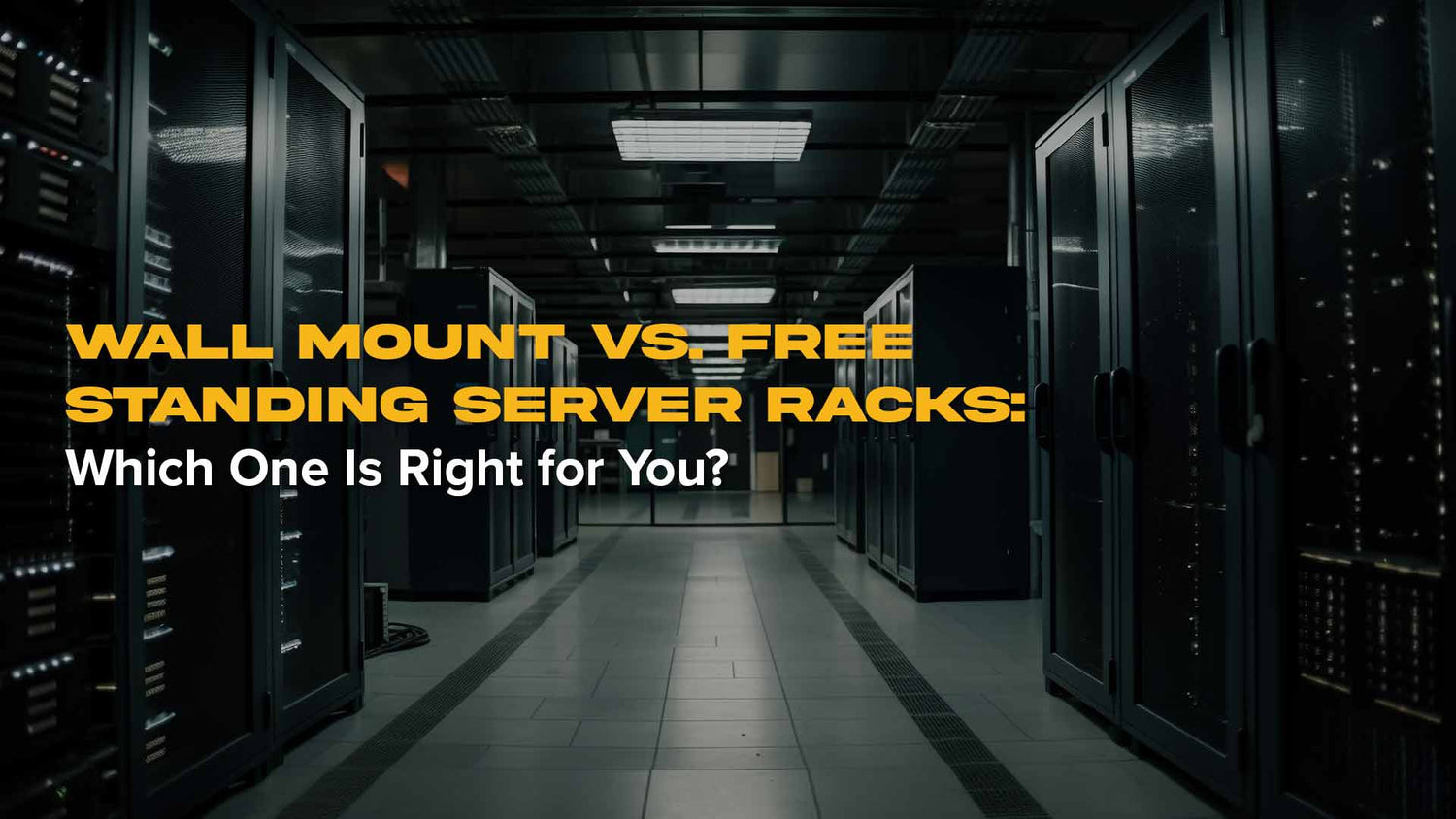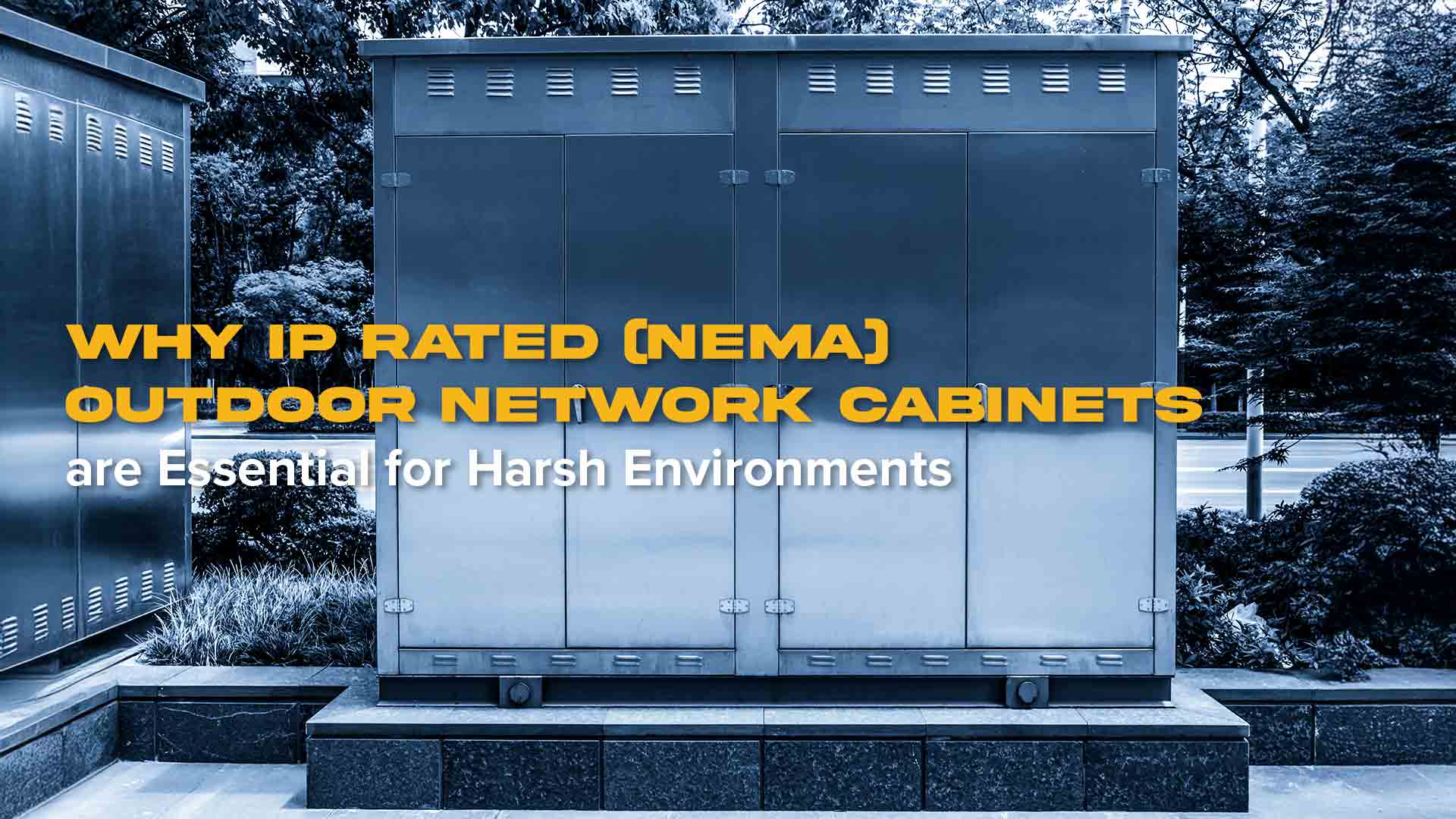In the swift moving world of tech today, your server organization isn't just a regular piece of gear it's a core part of how your business ticks. If you're kitting out a tiny office or handling a huge data center, picking the server organizer that's spot on can shake up your work's smoothness, protection, and growth potential. With businesses expanding and tech advancing, the choice between sticking a rack to the wall or letting it stand solo is getting super important. We're gonna dig into how these server racks are different, look over the big things you need to think about, and guide you to snag the rack that's a perfect match for what you need.
Organizing your gear to use space well and boost airflow can cut downtime and make maintenance easier. Also, keeping your IT setup secure and ready for the future can save you money over time. You're gonna get the lowdown on wall mount and free standing server racks by the time you finish this guide. This'll help you pick the one that fits your company just right.
Getting the Lowdown on Server Racks: The Simple Stuff
Jumping into the details grasping the essentials of server racks is vital for anyone involved with contemporary network configurations. Server racks act as the spine of a structured IT infrastructure. These structures offer a tidy space to keep servers, switches, and other important networking gears safe from knocks and bad weather conditions.
What Are Wall Mount Server Racks?
Wall mount server racks stick right onto a wall. They rock for spots short on space. They're kinda small and don't handle heavy stuff that well but are champs at turning tight spots, like skinny hallways or tiny rooms, into handy places. Sleek and simple, these racks are just the ticket for businesses aiming to make the most of the room they've got. They do this without ditching easy access or simple safeguarding.
What Are Free Standing Server Racks?
Free standing server racks stand on their own and you can put 'em pretty much anywhere that's got the room. They're the go to if you need to pack in lots of gear 'cause they're big and strong. Plus, they're flexible; you can shuffle them around to fit your space or grow as your needs do. When your tech needs a safe home and you've got floor to spare, these are your best bet.
Standalone server racks stand all by themselves and you can put them wherever as long as the ground is solid. They're bigger and you can fit more stuff in them, plus there's room to add even more later on. These bad boys can hold a lot of weight and are perfect when you've got heaps of bits and pieces to store, great for big server spaces or data centers. They come with strong cooling stuff and won't wobble around making them a top pick for companies needing a system that grows with them and can take on a bunch of heavy duty tasks.

Wall Mount Server Racks: The Good and Not so Good Stuff
Wall mounted server racks pack some cool perks, like being a real space saver and a breeze to pop up when you're tight on room and digging simplicity. They're easier on the wallet too, compared to the stand alone types. If you're working with a small area, wall mounts are a great way to keep the floor clear for other office stuff.
But hold on, they're not all sunshine and rainbows. Wall mounted racks can't handle a ton of weight so don't expect to load them up with lots of gear. They can be a bit of a bummer if you're planning to add more to your setup down the line and might not cut it for super heavy duty use. Plus, since they chill on the wall, keeping things cool and getting in there for upkeep can get tricky, so equipment doesn't cook in snug spots.
Good and Bad Sides of Independent Server Shelves
Independent server shelves get created with growth and robust performance as the goal. Such shelves are bigger, and that lets them hold more gadgets. They are ideal in places that plan to get bigger. These shelves come with top notch cooling stuff. Stopping gadgets from getting too hot when they're working hard is super important. They can carry heavier stuff, which means more choices for all types of machines. This makes sure your setup keeps up with whatever your company needs.
On the other hand free standing racks use up more room on the floor. This can be tough if you don't have much space. They also often cost more , including the price to set them up. A bigger footprint might make you use more power and cooling, which could bump up your running costs if you don't handle it well. But if your company puts performance and growth at the top of the list, the gains of free standing racks might be worth more than these negatives.
Things to Think About When Picking the Perfect Server Rack
Choosing wall mounted or free standing server racks means weighing up a bunch of stuff that'll affect your computer gear setup. Knowing how much space you've got how heavy your gear is, and how much you might grow matters a lot when you're making this decision.
How Much Space You Have and the Way Your Place Is Set Up
The design of your place has a big say in picking the right rack. When you've got a tight spot or not much room on the floor, wall mount server racks are pretty neat. They let you make the most of the space up high so you don’t have to give up room needed for other stuff you do. But hey, if you've got loads of room to play with and loads of gadgets to house free standing racks are the way to go. They give you the room to grow and don’t stick you with the limits that come with sticking stuff to walls.

Gear Weight and How Much It Can Hold
Think about how heavy and how many parts you're looking to put up. Racks on the wall work best for stuff that's not too heavy, while racks that stand on the floor are meant to take on more weight. If you put too much on a wall rack, it could be dangerous and make your gear wear out quicker. It's super important to look at how much weight the rack can take and to make sure it can hold all the stuff you have now and what you might get later, to keep your IT stuff safe and sound.
Cooling and Air Circulation Demands
Any server space must have proper air circulation. Free standing racks often have superior air flow, thanks to their open structure and built in air coolers. This matters a lot when you've got setups that pump out tons of heat. But with wall mounted racks, you might need to add more fans or AC units if they're in a boxed in spot. Checking out how much cooling your setup needs, based on your rack choice, will keep your gadgets from getting too hot and make them last longer.
Looking Ahead to Grow and Spread Out
When you're planning how your server space could grow in the future, think about how easy it is to add more to your setup. It's smart to pick a rack with room to grow so later on, you won't be stuck or have to buy a whole new system. This foresight is about avoiding headaches later, by making sure you're set up to expand your tech without a big fuss.
As your company gets bigger, the stuff you need for IT changes too. Picking a rack ready for more expansion down the line is super smart. Racks that stand on their own have extra space for more gear, so they're a solid choice for a long term spend if you think you'll grow. On the flip side, racks on the wall are good if you're running a smaller gig, but they might cramp your style when you want to level up unless you redo the whole setup.
Thinking About Your Wallet and Expenses
Cash always matters a bunch. You can snag server racks that attach to the wall for pretty cheap, and that includes setting them up too. That's pretty sweet for new companies or the little guys. Yet when you need top notch performance and the space to grow throwing money at standing racks can make sense. Doing this can mean spending less later on fixing stuff and not having your system crash. It's smart to weigh the costs you'll face right away against the money you'll save later on.

Plugging into Your Tech Setup
It ain't just about picking a rack. Thinking about how it's gonna play nice with the rest of your tech gear is crucial. When it all works together smooth, it makes your network rock and makes taking care of it way easier.
How to Put It All In Right
Installing racks the right way matters a ton, whether we're talking about ones stuck to the wall or the ones standing on their own. If you're fixing up racks on walls, make sure the wall can handle what you're putting on it. On the flip side, the stand alone racks gotta be in spots where air can flow free and they can get to power easy. A sweet setup with all cables tidy, everything in place, and smart positioning will make a huge difference. You'll see fewer headaches with upkeep and better performance for longer.
Keeping Up and Checking In
Getting your server racks up and running is just step one. You gotta keep 'em in tip top shape with some good old cleaning to beat the dust, make sure every part is tight and right, and watch the thermostat and moisture so things don’t get too hot to handle. A solid upkeep plan means your gear lasts longer and your IT space stays strong and dependable. Plus, if you take a peek inside now and then for a quick checkup, you might spot trouble before it starts burning a hole in your wallet.
Getting on the Same Page with Your IT Game Plan
Your server racks need to match the overall look and setup of your tech gear. Pick wall mount or free standing racks they gotta fit in with stuff like network cables, power units, and coolers. If your racks play nice with your whole IT game plan, you'll smooth out how your biz runs and build a tougher more growable network.
FAQ
What's the big deal between wall mount and free standing server racks?
Wall mount racks stick to walls perfect for tiny places and not so heavy gear. On the flip side free standing racks chill on their own and can handle more gear more rearranging, and better airflow, which is great for big spaces.
Which one saves you cash?
If you've got a small space or you're a bit tight on room, going for a wall mount rack costs less when you first buy and set it up. But hey, if you need more room to grow and you're looking at the big picture, the kind that stands on its own could be worth more for your bucks over time even if it hits your wallet harder at the start.
How to figure out the right size and how much it can hold for what you need?
Check out the space you've got and how heavy the gear is you're putting in. You gotta think about what you need right now and what you might need down the road. It's super important to know the exact size and weight your setup can handle to pick out the right rack.
What influences cooling and ventilation in these setups?
A rack's design and the addition of cooling systems play major roles in efficient cooling. Larger open designs of free standing racks mean better airflow. In contrast, wall mounted racks might need extra cooling solutions when they're set up in tight areas.
Are these racks simple to add to current IT setups?
Whether it's wall mounted or free standing, you can fit these racks into your IT scene pretty . You just gotta make sure things like correct installation handling cables , and keeping up with maintenance are on point. Doing this stuff right helps make sure your chosen rack really makes your network look good and work better.




Leave a comment
This site is protected by hCaptcha and the hCaptcha Privacy Policy and Terms of Service apply.